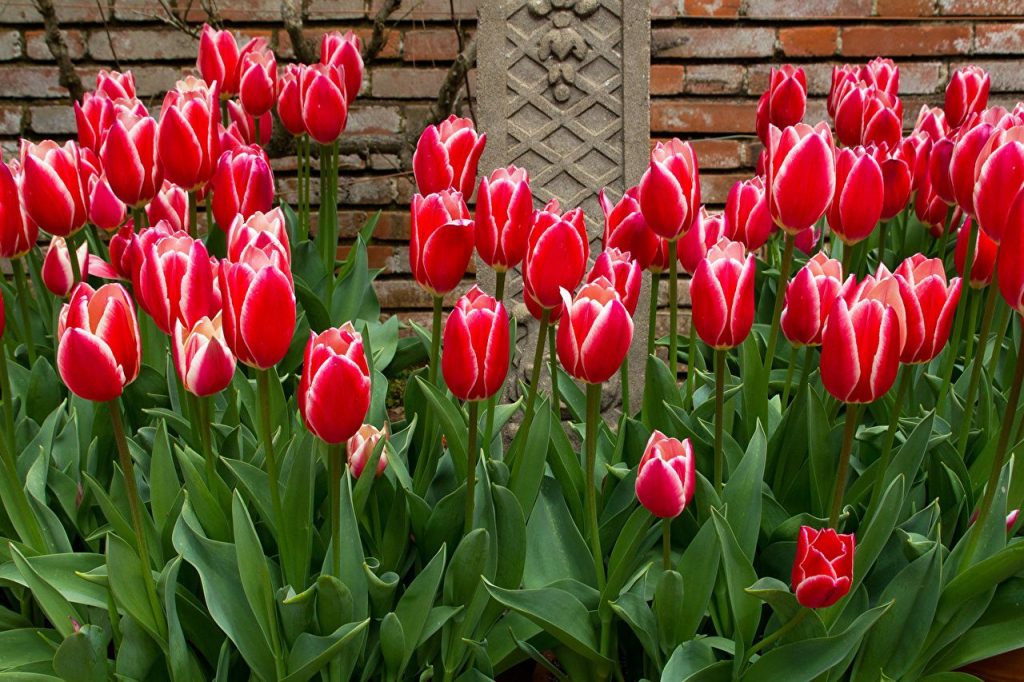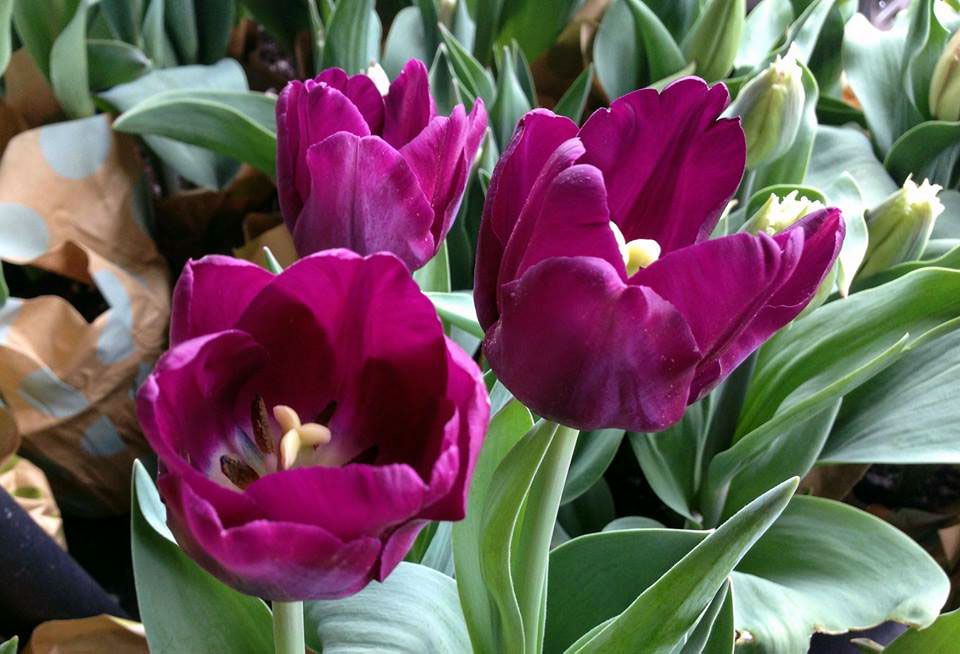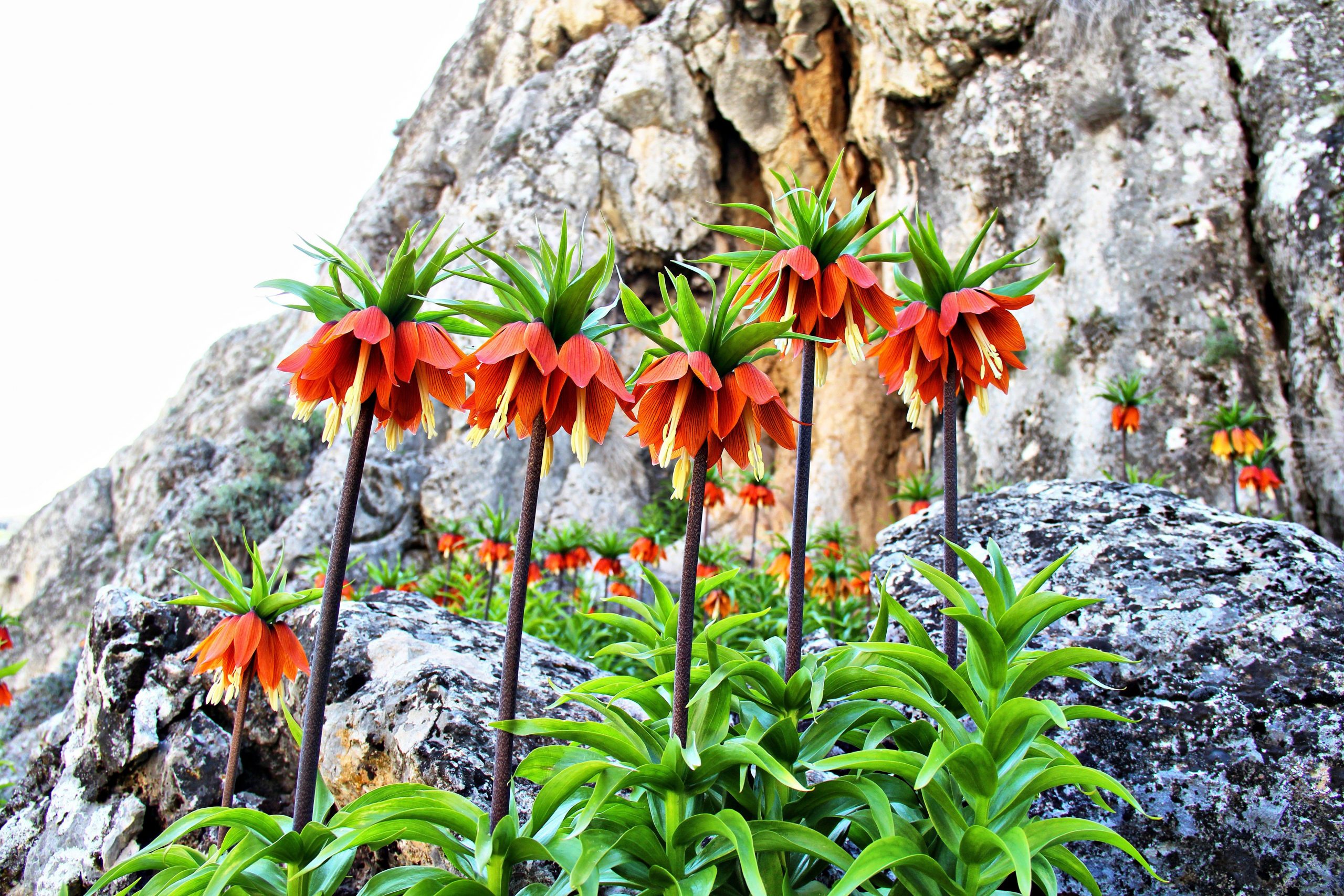
Tulips are one of the most popular and beloved flowers in the world. They come in a variety of colors, shapes, and sizes, and they can brighten up any garden or vase. But how do you take care of tulips? How do you make sure they last long and stay healthy? In this article, we will answer these questions and more. We will cover everything you need to know about tulip care, from planting to pruning, from indoors to outdoors, and from bulbs to bouquets. Whether you have a potted tulip, a tulip bouquet, or a tulip garden, we will show you how to care for your tulips and enjoy their beauty for as long as possible.
How to Take Care of a Tulip Plant?
Tulips are perennial plants that grow from bulbs. They are native to temperate regions of Europe and Asia, and they prefer cool and moist climates. Tulips are usually planted in the fall, before the first frost, and they bloom in the spring. Tulips need well-drained soil, full sun, and regular watering. They also need some fertilizer, especially before and after flowering. Tulips are not very demanding plants, but they do need some special care to keep them healthy and happy.

Tulip Care After Blooming
One of the most important aspects of tulip care is what to do after they bloom. Tulips have a short flowering period, usually lasting for a few weeks in April or May. After they bloom, they start to fade and wilt. Many people wonder what to do with tulips after they bloom. Should they cut them off, leave them alone, or dig them up?
The answer depends on whether you want to keep your tulips for the next year or not. If you want to enjoy your tulips again next spring, you need to let them complete their life cycle and store energy for the next season. This means you should not cut off the flowers or the leaves, but let them die back naturally. You can remove the faded petals, but leave the stems and the foliage intact.
The leaves will continue to photosynthesize and produce food for the bulbs. You should also water and fertilize your tulips until the leaves turn yellow and dry up, usually by June or July. Then you can cut off the leaves and stems, and leave the bulbs in the ground. If you live in a cold climate, you can mulch the soil to protect the bulbs from freezing. Also If you live in a warm climate, you may need to dig up the bulbs. And store them in a cool and dry place until the fall, when you can replant them.
If you don’t want to keep your tulips for the next year, or if you have hybrid tulips that are unlikely to bloom again. You can cut off the flowers and the leaves as soon as they fade. This will prevent the bulbs from wasting energy on producing seeds, and it will also make your garden look neater. You can either discard the bulbs or compost them.
Tulip Special Care
Some tulips may need some extra care to thrive. For example, siam tulips are tropical plants that are not related to true tulips, but have similar flowers. They need warm and humid conditions, and they can be grown indoors as houseplants. Siam tulips need bright but indirect light, moist but well-drained soil, and high humidity. They also need regular watering and fertilizing, especially during the growing season. Siam tulips can bloom several times a year, and they can be propagated by dividing the rhizomes.
Another example of tulips that need special care are parrot tulips, which have ruffled and fringed petals that give them a unique and exotic look. Parrot tulips are very sensitive to wind and rain, and they can easily break or lose their petals. They need a sheltered and sunny spot, and they may need some support to keep them upright. Parrot tulips are also prone to diseases and pests, and they may need some fungicide or insecticide to prevent them from rotting or being eaten.

How to Care for Tulips in Pots?
Tulips can also be grown in pots, either indoors or outdoors. Potted tulips can add a splash of color and charm to your home or patio, and they can be moved around as you like. However, tulips in pots need some different care than tulips in the ground. Here are some tips on how to care for tulips in pots:
- Choose a pot that is large enough to accommodate the bulbs and has drainage holes at the bottom. You can use any potting mix that is suitable for bulbs, or you can make your own by mixing equal parts of soil, sand, and compost.
- Plant the bulbs in the fall, about 6 inches deep and 4 inches apart. You can plant one or more varieties of tulips in the same pot, as long as they have similar flowering times. You can also plant some other plants on top of the bulbs, such as pansies, violas, or primroses, to create a layered effect and fill the empty space.
- Water the pot well after planting, and then keep the soil moist but not soggy. You can also add some slow-release fertilizer to the soil to provide some nutrients for the bulbs.
- Place the pot in a cool and dark place, such as a garage, a basement, or a refrigerator, for about 12 to 16 weeks. This is called the chilling period, and it is necessary for the bulbs to produce flowers. The temperature should be between 35 and 45 degrees Fahrenheit, and the pot should not be exposed to light or heat. You can check the pot occasionally and water it if the soil feels dry.
- After the chilling period, move the pot to a bright and warm place, such as a sunny window or a porch. You should see some green shoots emerging from the soil. You can water and tulip fertilize the pot regularly, and rotate it every few days to ensure even growth. You should also remove any dead or diseased leaves or flowers to keep the plant healthy.
- Enjoy your potted tulips as they bloom and brighten up your space. You can cut the tulip flowers and use them in a vase, or you can leave them on the plant until they fade. After they bloom, you can either discard the bulbs or try to save them for the next year. To save the bulbs, you need to follow the same steps as for tulips in the ground: let the leaves die back naturally, cut off the stems and foliage, and store the bulbs in a cool and dry place until the fall.

How to Care for Tulip Bouquets?
Another way to enjoy tulips is to buy or receive them as cut flowers. Tulip bouquets are very popular and elegant, and they can last for a week or more if you take good care of them. Here are some tips on how to care for tulip bouquets:
- Choose fresh and healthy tulips that have firm and green stems, tight and colorful buds, and no signs of wilting or browning. Avoid tulips that have fully opened or drooping flowers, yellow or limp leaves, or damaged or moldy stems.
- Cut the stems at an angle, about an inch from the bottom, using a sharp and clean knife or scissors. This will help the tulips absorb water and nutrients better, and prevent them from rotting or clogging. You can also remove any leaves that will be submerged in water, as they can cause bacteria and fungi to grow.
- Fill a clean vase with lukewarm water, and add some floral preservative or some sugar and vinegar to the water. This will help the tulips stay fresh and prevent them from wilting or fading. You can also add some bleach or aspirin to the water to prevent bacteria and fungi from growing.
- Arrange the tulips in the vase, and place the vase in a cool and bright place, away from direct sunlight, heat sources, or drafts. You can also add some other flowers or greenery to the vase, such as baby’s breath, eucalyptus, or ferns, to create a more attractive and diverse bouquet.
- Change the water and recut the stems every two or three days, or whenever the water becomes cloudy or smelly. You can also remove any dead or diseased flowers or leaves to keep the bouquet looking fresh and healthy.
- Enjoy your tulip bouquet as it grows and changes. Tulips are unique among cut flowers, as they continue to grow and bend in the vase, creating a dynamic and natural look. You can admire their beauty and fragrance, and appreciate their different stages and shapes.

How to care for tulip bulbs after they bloom?
If you want to keep your tulip bulbs for the next year, you need to let them complete their life cycle and store energy for the next season. This means you should not cut off the flowers or the leaves, but let them die back naturally. You should also water and fertilize your tulips until the leaves turn yellow and dry up, usually by June or July. Then you can cut off the leaves and stems, and leave the bulbs in the ground. If you live in a cold climate, you can mulch the soil to protect the bulbs from freezing. If you live in a warm climate, you may need to dig up the bulbs and store them in a cool and dry place until the fall, when you can replant them.
Are tulips hard to take care of?
No, tulips are not very hard to take care of. They need well-drained soil, full sun, and regular watering. They also need some fertilizer, especially before and after flowering. The main challenge is to decide what to do with them after they bloom, and whether you want to keep them for the next year or not.
